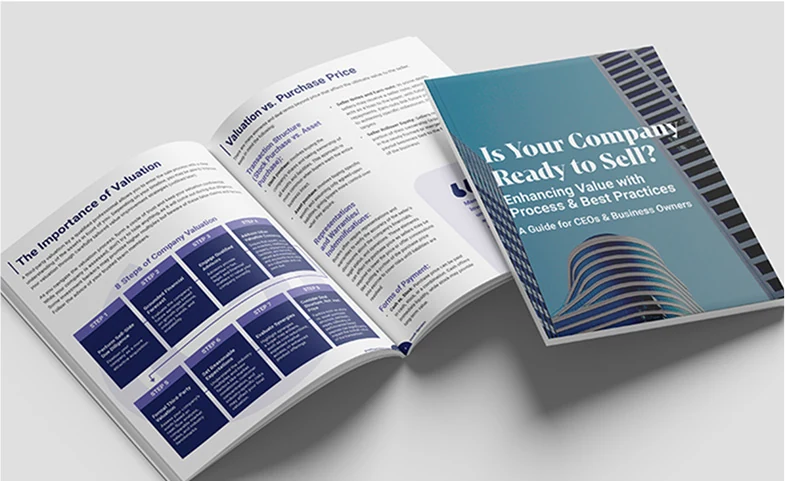When facing an unpredictable economy, Chief Financial Officers (CFOs) grapple with rising costs, fluctuating interest rates, potential slowdowns, and disrupted supply chains. Here, the question of how to optimize operating cash flow and working capital becomes crucial to survival. With a robust strategy for managing their portfolio company’s financial resources, CFOs can provide the resilience needed to remain solvent and on-track.
This guide provides leaders of private equity and venture capital firms with actionable strategies to optimize their financial operations and ensure liquidity, even in the most unpredictable times.
Two Key Factors in Risk Management
Managing risk is not a one-size-fits-all solution. The optimal approach to cash flow projection during economic volatility hinges on several factors. A nuanced understanding of these elements allows CFOs to tailor their financial strategies so that they can pivot strategies in response to market changes:
-
Industry Dynamics: Cyclical industries might require more aggressive inventory management strategies compared to those in more stable sectors.
-
Competitive Landscape: Firms with a strong market position may be able to negotiate more favorable payment terms with suppliers, while those facing intense competition might need to prioritize customer retention through flexible payment options.
5 Steps for Working Capital Optimization
At the core of financial optimization during uncertain times is the need to effectively manage working capital. Your working capital is the money you have on hand and ready to use. It’s a simple calculation of your current assets minus your current liabilities.
Optimization here means ensuring a harmonious balance between cash inflow and outflow to maximize liquidity. When it becomes difficult to depend on external factors like interest rates, the solution should involve internal operational enhancements. Here are five strategies to optimize working capital:
1. Improve Collection on Accounts Receivable
Speeding up the collection process enhances liquidity. However, improving this process could require adjustments to billing systems, technology upgrades and internal culture shifts so that you’re equipped to prioritize collections.
2. Reduce Inventory
Excess inventory ties up capital. Analyze inventory turnover ratios and implement just-in-time (JIT) inventory management practices to minimize cash tied up in unsold products. This not only improves cash flow but also reduces storage costs.
3. Negotiate Better Terms with Suppliers
Lengthening payment terms with suppliers can free up significant amounts of cash. Renegotiate to extend payment windows and explore potential volume discounts for bulk purchases where financially feasible. Your goal should be to maintain strong relationships with suppliers so that both parties benefit without disruption to supply continuity.
4. Manage Cash Outflow
Prioritize expenditures and delay non-essential expenses to conserve cash. Implement a rigorous process for evaluating your spending ROI and cut costs wherever possible without jeopardizing business operations.
5. Monitor Liquidity
Effectively monitoring liquidity ratios and cash flow forecasts enables companies to anticipate and mitigate cash shortfalls. It also informs strategic decisions around investments, dividends, and debt management.
5 Ways to Improve Cash Flow
Beyond managing working capital, there are strategic maneuvers companies can take to increase cash flow:
1. Incentivize Early Payments
Offer discounts or other benefits for payments received before the due date. This incentivizes faster collections and improves cash flow predictability. However, ensure clear communication and implement internal controls to avoid potential revenue leakage.
2. Penalize Late Payments
Consider implementing late payment fees and interest charges to discourage overdue payments. This should be coupled with a well-defined communication strategy to ensure customers are aware of the consequences of late payments.
3. Shift Focus to High Margin Products
Analyzing product lines and focusing on those with higher margins can significantly improve profitability and cash flow. This can involve re-evaluating product portfolios and potentially discontinuing less profitable lines.
4. Increase Margins Across Existing Products
Analyze cost structures and identify opportunities for cost reduction without compromising product quality. Negotiate lower prices with suppliers or explore alternative sourcing options.
5. Tighten Credit Management
Implement stricter credit checks, establish clear policies on eligibility, and tighten credit limits to reduce risk and improve cash flow. Internal training balanced with the right technology can facilitate this process.
External Help with Major Financial Decisions
Deciding which steps to take requires a thorough analysis of your company’s financial health and market position. It’s an opportune time to revisit previously considered strategies and assess their viability in the current economic landscape.
If you lack sufficient internal resources to do this, or if you need an unbiased perspective, external expertise can offer crucial insight. A fractional CFO or a financial consultant can provide the specialized knowledge necessary to identify strategies to optimize capital management and improve cash flow.
Maximize Your Cash Flow
The experienced Growth Operators team provides comprehensive working capital analysis, identifies areas for improvement, and offers unbiased recommendations tailored to your company’s unique circumstances. Talk to a Growth Pro today and optimize your capital resources for the future.

